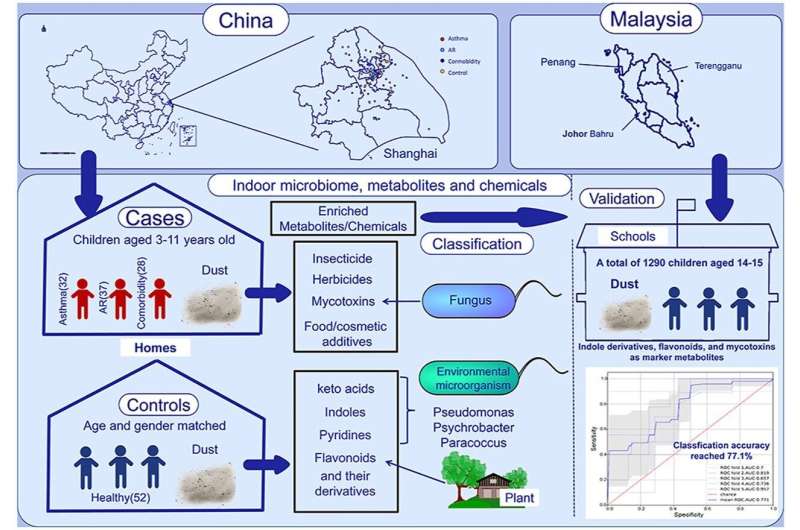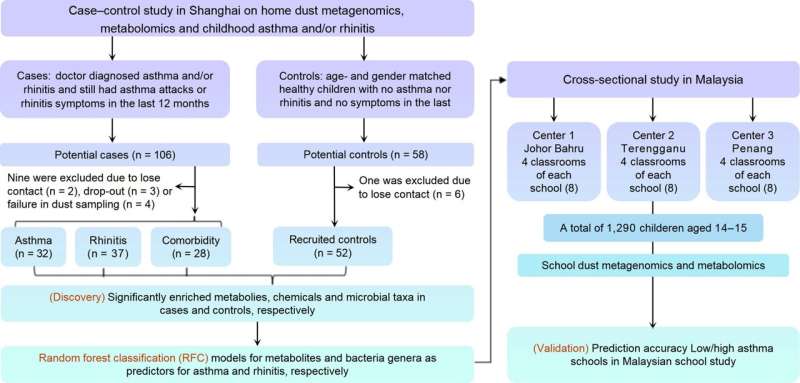This article has been reviewed according to Science X's editorial process and policies. Editors have highlighted the following attributes while ensuring the content's credibility:
fact-checked
proofread
Study reveals indoor metabolites as key indicators in asthma and allergic rhinitis

Millions of children worldwide suffer from asthma and allergic rhinitis (AR), two chronic respiratory conditions that significantly impact their quality of life. While environmental factors are known to play a role, pinpointing the exact culprits has been challenging, particularly due to the vast diversity of the indoor microbiome.
In a study published in the journal Eco-Environment & Health, researchers have made a pivotal discovery concerning asthma and allergic rhinitis (AR). This work underscores the critical roles of indoor microorganisms and metabolites, shedding new light on the environmental factors that trigger these prevalent respiratory conditions.
Indoor metabolites: A chemical fingerprint of the home environment
This study, conducted by researchers in China and Malaysia, takes a novel approach by focusing on indoor metabolites and chemicals—the products of both microbial and human activity in the home environment. Using high-throughput technologies, the team compared the dust composition of homes with children diagnosed with asthma, AR, or both, with homes of healthy children. The analysis revealed distinct differences in the chemical profiles of the two groups.
Homes with diseased children had higher levels of mycotoxins (toxic fungal metabolites) and synthetic chemicals like herbicides, insecticides, and food/cosmetic additives. Conversely, homes of healthy children were enriched with beneficial environmental microbes and metabolites like keto acids, indoles, pyridines, and flavonoids (astragalin and hesperidin).
Excitingly, the researchers developed a model based on these characteristic metabolites and chemicals that could accurately predict the prevalence of asthma and AR in an independent dataset from Malaysia. This suggests that analyzing dust for its chemical fingerprint may be a more reliable and consistent way to assess environmental risk for these diseases than studying the complex and variable microbiome.

Toward a 'metabolically healthy' home environment
The study's findings pave the way for exciting new possibilities in preventing and managing childhood asthma and AR. By testing for specific metabolites in household dust, we could potentially identify homes with unhealthy chemical profiles and implement targeted interventions. This could involve promoting the growth of beneficial microbes through probiotic sprays or adjusting ventilation systems to reduce toxin exposure.
In conclusion, this study marks a significant shift in our understanding of the environmental factors contributing to childhood asthma and AR. By prioritizing indoor metabolites and chemicals, we may finally have a robust and practical tool for environmental assessment and, ultimately, the creation of "metabolically healthy" homes for our children.
More information: Yu Sun et al, Indoor metabolites and chemicals outperform microbiome in classifying childhood asthma and allergic rhinitis, Eco-Environment & Health (2023). DOI: 10.1016/j.eehl.2023.08.001




















